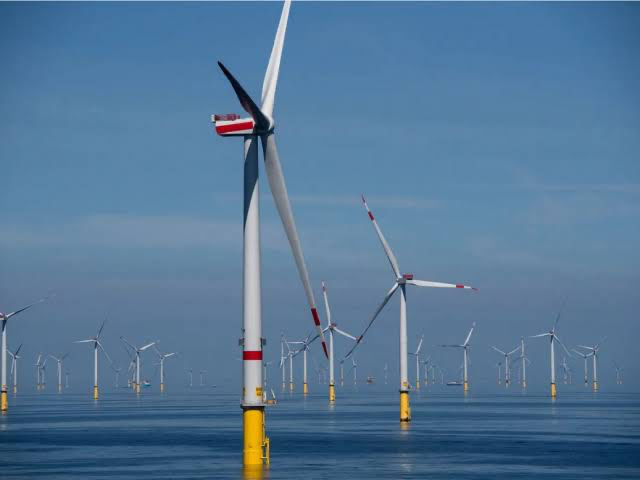The global offshore wind market is showing signs of recovery after a period of uncertainty caused by rising costs. This positive outlook comes from Miguel Stillwell d’Andrade, CEO of Portugal’s EDP, a major player in the renewable energy sector.
Challenges and Price Adjustments
Offshore wind farms are a crucial element in many countries’ plans to achieve ambitious climate goals. However, their high upfront costs have presented a hurdle. Exacerbating this challenge, inflation in 2023 led to project cancellations and pauses in development, particularly in the United States and Britain. Concerns mounted regarding the long-term viability of the offshore wind sector.
D’Andrade, speaking at an energy event in Oxford, expressed optimism about the future of offshore wind. He highlighted a “major reset in prices” for power purchase agreements (PPAs) and government-backed contracts for difference (CfDs). These adjusted pricing structures are making offshore wind projects economically viable once again.
EDP leverages its expertise through Ocean Winds, a 50/50 joint venture with ENGIE, that spearheads the development of offshore wind projects worldwide. D’Andrade voices confidence in the American market despite the upcoming presidential election. He acknowledges the potential shift in political leadership but emphasizes the bipartisan support for the Inflation Reduction Act (IRA).
US Inflation Reduction Act Offers Support
The IRA, a cornerstone of President Biden’s clean energy agenda, offers a significant $370 billion package to support clean technology development, including offshore wind. D’Andrade points out that many states receiving these funds have Republican governors, suggesting a level of bipartisan backing for clean energy initiatives.
The offshore wind industry’s recent struggles illustrate the complex interplay between economic factors and the transition to renewable energy. However, d’Andrade’s optimism reflects a growing consensus that adjustments have been made, paving the way for a more sustainable future powered by offshore wind.
Source: Reuters



